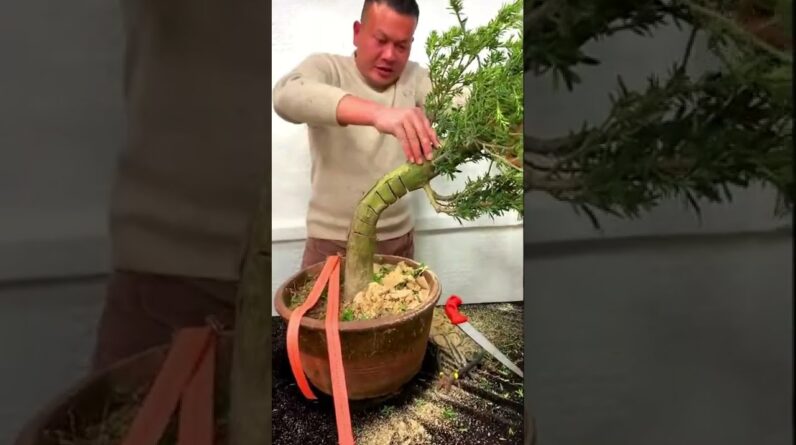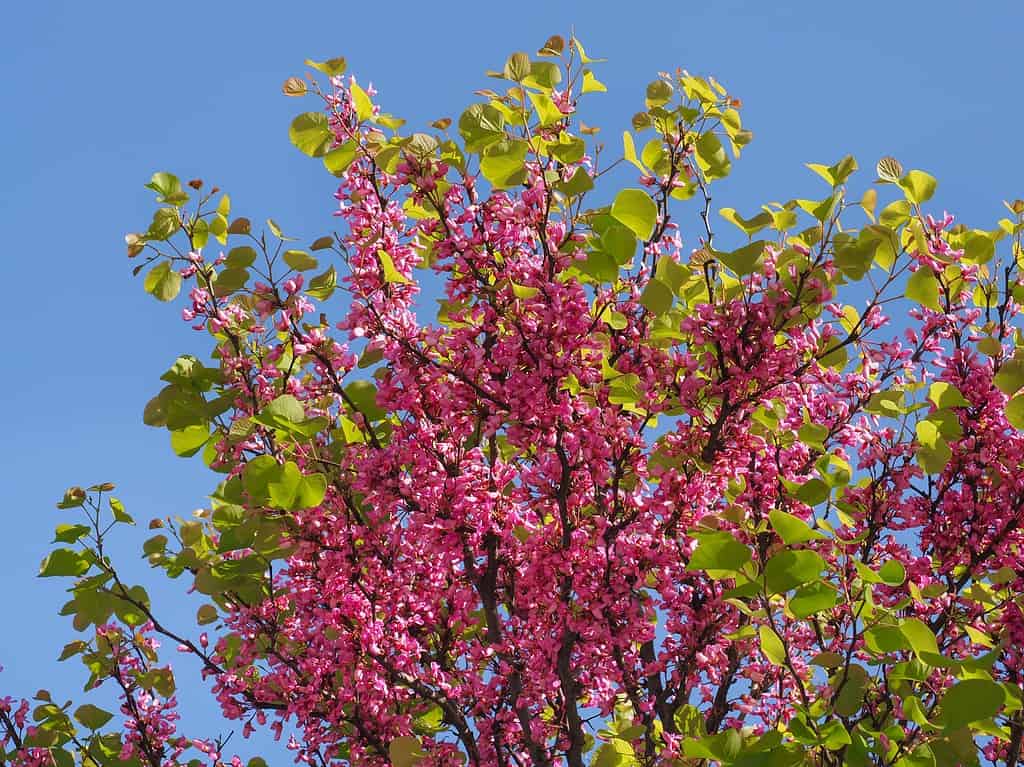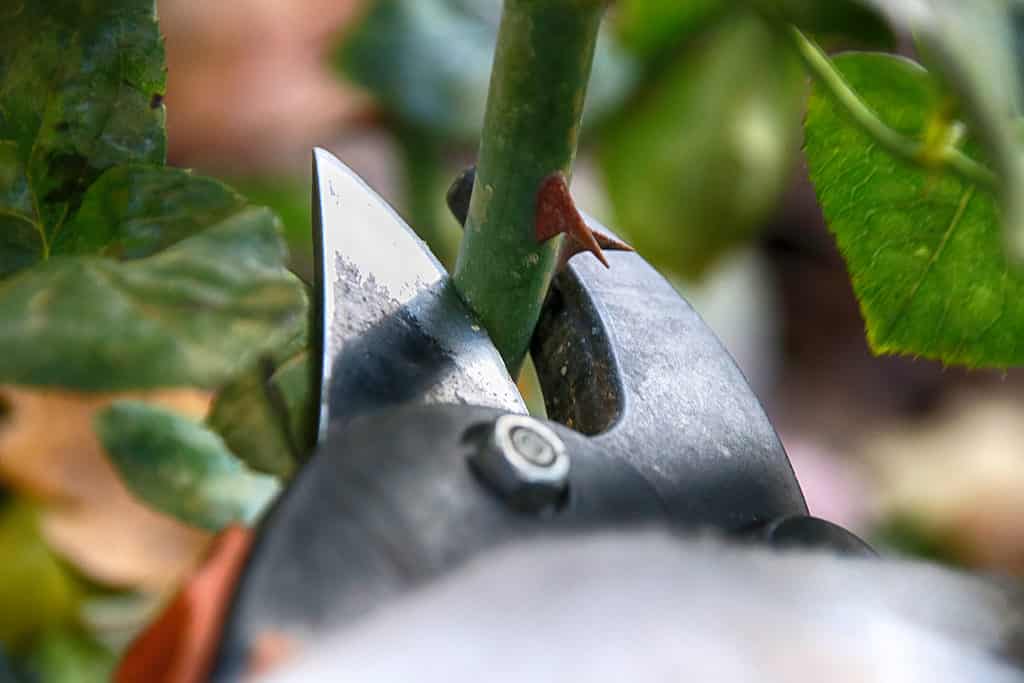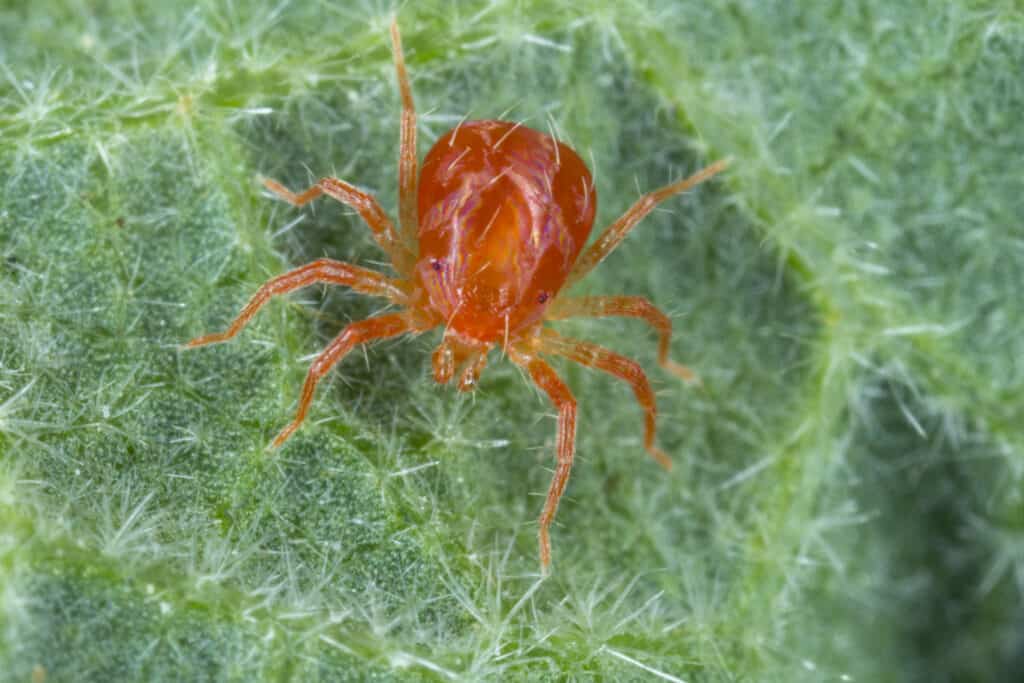
Needing to add a touch of beauty to your bonsai garden? Look no further than the Judas tree. With its vibrant magenta blooms, heart-shaped leaves, and unique purple seed pods, the Judas tree is sure to captivate any gardening enthusiast.
Not only is it visually appealing, but its slow growth and compact size make it an excellent choice for smaller bonsai gardens. Whether you prefer the Eastern Redbud, Forest Pansy, Chinese Redbud, Texas Redbud, or Lavender Twist variety, you’ll find that the Judas tree thrives in full to partial sunlight, well-draining soil, and with regular watering. By incorporating pruning techniques to maintain its shape and size, and utilizing wire to bend the branches, you can easily cultivate a stunning Judas bonsai tree.
Propagation can be done through various methods, such as seeds, cuttings, air layering, or grafting. Just remember to provide proper airflow and drainage to prevent fungus-related issues. Discover the beauty and versatility of the Judas tree by incorporating it into your bonsai garden today.

1. Overview of the Judas Tree
The Judas tree, known for its stunning magenta blooms, heart-shaped leaves, and purple seed pods, is an attractive addition to any bonsai garden. This tree’s slow growth and compact size make it a great choice for small bonsai gardens. There are several varieties of Judas bonsai trees, including the Eastern Redbud, Forest Pansy, Chinese Redbud, Texas Redbud, and Lavender Twist. Each variety offers its own unique characteristics and beauty.
1.1 Description of the Judas Tree
The Judas tree is famous for its vibrant magenta blooms that resemble pea flowers. These beautiful blossoms create a captivating spectacle during the spring months. The tree also features heart-shaped leaves that add a touch of elegance to its overall appearance. As if that wasn’t enough, the Judas tree produces distinctive purple seed pods that appear after the blooming season and provide visual interest throughout the year.
1.2 Benefits of Adding a Judas Tree to Your Bonsai Garden
Adding a Judas tree to your bonsai garden offers numerous benefits. Firstly, its slow growth allows for easier maintenance and shaping. This makes it an excellent choice for both beginners and experienced bonsai enthusiasts. Secondly, the compact size of the Judas tree ensures it won’t overpower your garden, even in confined spaces. Lastly, the vibrant blooms, unique foliage, and seed pods offer year-round visual appeal, ensuring your bonsai garden remains lively and captivating.
1.3 Varieties of Judas Bonsai Trees
The Judas tree is available in various captivating varieties. The Eastern Redbud, known for its prolific blooms, boasts stunning pink flowers that emerge before the leaves. The Forest Pansy variety showcases deep purple leaves, making it a standout in any bonsai garden. The Chinese Redbud features pendulous branches and pinkish-purple flowers, while the Texas Redbud offers vibrant magenta blooms. Lastly, the Lavender Twist variety features twisted branches and showy flowers. Each variety brings its own unique beauty to your bonsai garden, allowing you to choose the one that resonates with your taste.
2. Growing Conditions for Judas Bonsai Trees
Proper growing conditions are essential for the health and development of Judas bonsai trees. Paying attention to sunlight requirements, soil type, and watering needs will ensure their optimal growth.
2.1 Sunlight Requirements
Judas bonsai trees thrive in full to partial sunlight. They require at least 4-6 hours of direct sunlight each day to photosynthesize and generate the energy needed for growth. Placing your Judas tree in a position that receives ample sunlight will promote healthy foliage and abundant blooms.
2.2 Soil Type and Drainage
To facilitate the growth of Judas bonsai trees, it’s crucial to use the right soil type with excellent drainage. A well-draining soil mix that retains some moisture without becoming waterlogged is ideal for these trees. A mixture of bonsai soil, organic matter, and inorganic components, such as perlite or pumice, can create the perfect balance of drainage and moisture retention.
2.3 Watering Needs
Proper watering is essential to keep Judas bonsai trees healthy. These trees prefer consistent moisture in their soil, but it’s essential not to overwater them. Aim to water your Judas tree when the top inch of soil feels slightly dry to the touch. Avoid letting the soil dry out completely or become waterlogged, as both conditions can be detrimental to the tree’s health. Regular monitoring and adjusting of watering frequency according to the season and climate will help maintain optimal moisture levels.

3. Pruning and Shaping Techniques for Judas Bonsai Trees
Pruning and shaping play a crucial role in maintaining the desired shape and size of Judas bonsai trees. Proper techniques and tools are necessary to achieve the desired aesthetics.
3.1 Importance of Pruning
Regular pruning is necessary to remove unwanted growth, promote branching, and maintain the overall shape of Judas bonsai trees. Pruning helps redirect energy to areas that require development, ensuring a balanced and visually appealing tree. It is typically done during the dormant season to minimize stress on the tree.
3.2 Tools for Pruning
Using the right tools for pruning is essential to minimize damage to the tree and achieve clean cuts. Pruning shears, also known as secateurs, are the primary tool for removing small branches and foliage. Concave branch cutters are ideal for cutting thicker branches, ensuring clean and smooth cuts that aid in faster healing. Wire cutters or bonsai wire pliers are necessary for removing or adjusting wiring without damaging the branches.
3.3 Shaping through Wiring
Wiring is a technique commonly used to shape and style bonsai trees, including Judas bonsai trees. Aluminum or copper wire is carefully wrapped around the branches, allowing them to be gently bent into the desired position. Wiring should be done with caution to avoid damaging or constricting the branches. Careful monitoring is required to prevent wire biting into the branches, which could hinder their growth and health. Wiring is typically executed during the tree’s active growing season and removed once set in place, usually after a few months.

4. Propagating Judas Bonsai Trees
Propagating Judas bonsai trees can be done through various methods, including seeds, cuttings, air layering, and grafting. Each technique offers its own advantages and challenges.
4.1 Propagation through Seeds
Propagation through seeds is a popular method for starting new Judas bonsai trees. Collecting seeds from mature, healthy trees and providing them with optimal conditions for germination is key. Seed stratification, a process of simulating the natural freeze and thaw cycles, can aid in breaking seed dormancy. Once germinated, seedlings require careful nurturing and regular monitoring as they develop into mature trees.
4.2 Propagation through Cuttings
Propagation through cuttings involves taking a small portion of a healthy Judas bonsai tree, typically a semi-hardwood or hardwood cutting, and encouraging it to grow roots and develop into a new tree. Cuttings should be taken during the tree’s dormant season and kept in a moist rooting medium until roots form. This method allows for the production of genetically identical trees to the parent plant.
4.3 Propagation through Air Layering
Air layering is a more advanced technique used to propagate Judas bonsai trees. It involves creating a wound on a branch and encouraging the development of roots at that point. Once the roots have formed, the branch can be removed and potted as a new tree. Air layering allows for the production of larger, more developed trees in a shorter timeframe compared to other propagation methods.
4.4 Propagation through Grafting
Grafting is a technique where a portion of one plant, called the scion, is attached to another plant, known as the rootstock. This method allows for combining desirable qualities of different Judas bonsai tree varieties. Grafting is a precise technique that requires specialized skills and knowledge to ensure successful union and compatibility between the scion and rootstock.

5. Common Problems and Diseases of Judas Bonsai Trees
Like any living organism, Judas bonsai trees can be susceptible to various problems and diseases. Understanding common issues and implementing preventive measures is essential to ensure the health and longevity of these magnificent trees.
5.1 Fungus-Related Illnesses
Judas bonsai trees, like many other tree species, can be affected by fungal infections. These infections often result from poor airflow and excess moisture around the foliage and roots. Regular inspection of the tree for signs of fungal disease, such as powdery mildew or root rot, is crucial. Promoting proper airflow around the tree and ensuring well-draining soil can help prevent these issues. If fungal infections occur, appropriate fungicidal treatments may be necessary.
5.2 Prevention and Treatment
To prevent common problems and diseases, it is vital to maintain a healthy growing environment for Judas bonsai trees. This includes providing adequate sunlight and ventilation, using well-draining soil, and practicing proper watering techniques. Regular monitoring and early detection of any issues will allow for timely intervention and treatment. Additionally, conducting research and seeking guidance from experienced bonsai enthusiasts or professionals can provide valuable insights into preventing and addressing specific problems.
In conclusion, the Judas tree is a captivating addition to any bonsai garden, with its vibrant blooms, unique foliage, and compact size. By providing the right growing conditions, implementing appropriate pruning and shaping techniques, and exploring various propagation methods, you can enjoy the beauty and rewards of nurturing Judas bonsai trees. Remember to also be vigilant in preventing and addressing common problems and diseases to ensure the long-term health and success of these remarkable trees. Happy bonsai gardening!


